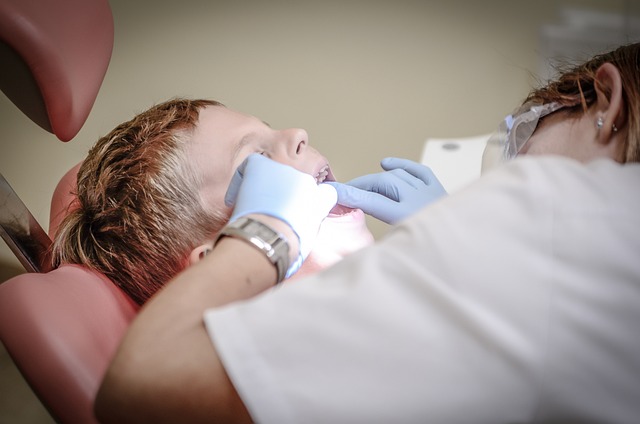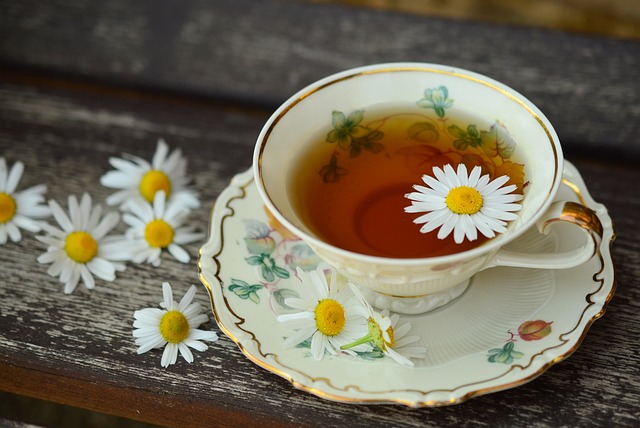The Composition of Dental Crowns: Unveiling Dental Materials
Dental crowns have emerged as a vital solution to restore damaged or weakened teeth, offering both functional and aesthetic benefits. As patients seeking dental crown treatments grow in numbers, it becomes imperative to gain a comprehensive understanding of the materials used in their composition. In this article, we delve into the world of dental materials used in the fabrication of dental crowns, shedding light on the key components that contribute to their strength, durability, and natural appearance. By unraveling the mysteries behind dental crown composition, we aim to equip both dental professionals and patients with valuable insights that will facilitate informed decision-making and foster a deeper appreciation for the remarkable craftsmanship exhibited in modern dentistry.
1. Understanding Dental Crowns: A Comprehensive Overview of Dental Materials
In the field of dentistry, dental crowns play a vital role in restoring damaged or decayed teeth. A dental crown is a permanent prosthetic that is placed over a tooth to restore its shape, size, strength, and appearance. It acts as a protective covering, encasing the tooth in a material that closely resembles natural teeth.
Dental crowns can be made from various materials, each offering unique advantages. Here are some commonly used dental crown materials:
-
- Porcelain-fused-to-metal (PFM) crowns: These crowns are a popular choice due to their excellent durability and natural appearance. The underlying metal structure provides strength, while the porcelain outer layer matches the color of adjacent teeth.
- All-ceramic crowns: These crowns are highly aesthetic as they mimic the translucency and color of natural teeth. They are ideal for patients with metal allergies and those seeking a more natural-looking restoration.
- Metal crowns: Made from gold alloy or base metal alloys, metal crowns are known for their superior strength and durability. They are highly resistant to wear and can withstand the biting forces exerted on molars.
The choice of dental crown material depends on several factors, such as the location of the tooth, the extent of damage, aesthetic preferences, and budget. Your dentist will carefully assess your situation and guide you to make an informed decision that best meets your needs, ensuring a successful and long-lasting dental crown restoration.
2. The Art of Dental Restoration: Unveiling the Components of a Dental Crown
Dental crowns are a fundamental aspect of dental restoration used to address a wide range of dental issues. Crown procedures are designed to restore the shape, size, and strength of damaged or decayed teeth. Whether your tooth has been weakened by a large filling, root canal treatment, or fracture, a dental crown can provide the necessary support and protection.
A dental crown is a fixed prosthetic device made of various durable materials, such as porcelain, ceramic, or metal alloys. These materials are carefully selected based on their ability to withstand the forces of biting and chewing. The crown is custom-made to perfectly fit your tooth, covering it entirely from the gum line to the chewing surface.
Components of a dental crown:
-
- Tooth preparation: Before placing the crown, the affected tooth is prepared by removing any decay or damaged areas. The tooth is then shaped to allow the crown to fit snugly on top. In some cases, the tooth may need to be built up using a filling material to support the crown.
- Temporary crown: While the permanent crown is being created in a dental laboratory, a temporary crown is placed over the prepared tooth to provide protection and aesthetics.
- Permanent crown: Once the permanent crown is ready, it is bonded to the tooth using dental cement. The crown is adjusted for proper fit, bite, and color, ensuring a seamless natural appearance.
Dental crowns not only restore the functionality of damaged teeth but also improve their appearance and provide long-lasting solutions. It is important to consult with a qualified dentist to determine the most suitable crown material and treatment plan for your dental needs.
3. Exploring Dental Crown Materials: From Traditional to Cutting-Edge Options
When it comes to dental crowns, there are a variety of materials to choose from, each with their own set of advantages and disadvantages. Understanding the differences between these materials can help you make an informed decision about which option is best for your needs. Here, we will explore both traditional and cutting-edge dental crown materials.
Traditional Dental Crown Materials:
-
- Porcelain fused to metal (PFM): This type of crown provides a natural appearance due to the porcelain outer layer, while the metal core offers strength and durability. However, the metal may cause a dark line to show at the gumline over time.
- All-Metal Crowns: These crowns are made from gold, silver, or other alloys. They are known for their exceptional strength and resistance to wear, but their metallic appearance is not as aesthetically pleasing as other options.
- Pure Ceramic Crowns: Made entirely of ceramic, these crowns provide excellent aesthetics and are ideal for those with metal allergies. However, they may be more prone to fracture compared to other materials.
Cutting-Edge Dental Crown Materials:
-
- Zirconia Crowns: Zirconia offers both strength and aesthetics, making it an excellent choice for those seeking a durable, natural-looking crown. These crowns are biocompatible, reducing the risk of allergic reactions.
- Composite Resin Crowns: Using tooth-colored composite materials, these crowns are a cost-effective option. While they may not be as durable as other materials, they can still provide an aesthetically pleasing result.
- Porcelain fused to zirconia: This type of crown combines the strength of zirconia with the natural appearance of porcelain. It offers an optimal blend of aesthetics and durability.
Before determining which dental crown material is the best fit for you, it is essential to consult with your dentist. They will evaluate your specific needs and preferences to recommend the most suitable option. By exploring the range of traditional and cutting-edge materials available, you can confidently select a dental crown that meets both your functional and aesthetic requirements.
4. The Role of Porcelain in Dental Crowns: A Versatile and Aesthetically Pleasing Material
Porcelain dental crowns play a crucial role in modern dentistry, offering both versatility and aesthetic appeal to patients seeking to restore their smiles. Made from a ceramic material, dental crowns crafted from porcelain are renowned for their ability to mimic natural teeth, seamlessly blending in with the surrounding dentition.
One of the key benefits of porcelain crowns is their exceptional durability. With proper care and maintenance, they can last for many years, making them a long-term investment for patients. Additionally, porcelain crowns are highly resistant to staining, allowing patients to enjoy their favorite foods and beverages without worrying about discoloration. This makes them an excellent choice for individuals who want to achieve a bright and natural-looking smile.
-
- Porcelain crowns provide an excellent match to the color and translucency of natural teeth, ensuring a seamless blend and enhancing overall aesthetic appeal.
- The material used in porcelain crowns is biocompatible, reducing the risk of allergic reactions or other adverse effects.
- Porcelain crowns can be customized in shape, size, and shade to meet each patient’s specific needs and achieve the desired cosmetic outcome.
In summary, porcelain has become a go-to material for dental crowns due to its versatility, durability, and ability to create a natural-looking smile. Whether it’s for restoring a damaged tooth, improving the appearance of misshapen teeth, or providing structural support after a root canal procedure – porcelain crowns offer an aesthetically pleasing solution that can greatly enhance a patient’s confidence and overall oral health.
5. Mastering Metal Alloys: An Indispensable Component in Dental Crown Construction
When it comes to dental crown construction, mastering metal alloys is absolutely crucial. Metal alloys are an indispensable component in creating durable and long-lasting dental crowns that can withstand the daily wear and tear of chewing and speaking.
One of the main advantages of using metal alloys in dental crown construction is their exceptional strength and durability. These alloys, such as cobalt-chromium and gold alloys, provide superior resistance to fracture and corrosion, ensuring the longevity of the dental crown. Additionally, metal alloys offer excellent biocompatibility, meaning they are well-tolerated by the human body without causing any adverse reactions. This makes them a safe and reliable choice for dental crown materials.
-
- Metal alloys provide exceptional strength and durability.
- They offer superior resistance to fracture and corrosion.
- They have excellent biocompatibility, making them safe for use in dental crowns.
Moreover, metal alloys allow for precise and accurate fit, ensuring optimal functionality and aesthetics of the dental crown. Their malleability allows them to be easily shaped and customized to match the natural tooth structure. This allows for a seamless integration with the remaining teeth, resulting in a natural-looking smile.
In conclusion, mastering metal alloys is of utmost importance in dental crown construction. Their strength, durability, biocompatibility, and flexibility make them an indispensable component in creating dental crowns that are not only functional but also aesthetically pleasing.
6. Ceramic Crowns: The Modern Solution for Combining Strength and Natural Beauty
Ceramic crowns have become the go-to solution for those seeking a combination of strength and natural beauty in their dental restorations. These modern crowns are made from a high-quality ceramic material that closely resembles the appearance of natural teeth, making them virtually indistinguishable from the original teeth.
One of the main benefits of ceramic crowns is their exceptional strength and durability. Due to their composition, ceramic crowns can withstand the daily wear and tear that comes with regular use, making them a long-lasting solution for dental restorations. Moreover, their natural translucency allows light to pass through the restoration, giving it a lifelike appearance that seamlessly blends with the surrounding teeth. Another perk of ceramic crowns is their biocompatibility, meaning they are well-tolerated by the oral tissues, making them suitable for patients with sensitivities or allergies.
-
- Enhanced aesthetics: Ceramic crowns mimic the natural color, shape, and texture of teeth for a seamless and aesthetic smile.
- Biocompatibility: These crowns are gentle on the gums and tissues, minimizing the risk of irritation or allergic reactions.
- Minimal tooth structure removal: Ceramic crowns require less removal of healthy tooth structure compared to other types of crowns.
- Stain resistance: Ceramic material is highly resistant to staining, allowing your crown to maintain its natural beauty over time.
- Longevity: With proper care, ceramic crowns can last for many years, providing a durable and reliable solution for dental restorations.
Whether you need a crown to restore a damaged tooth, improve the appearance of your smile, or strengthen a weak tooth, ceramic crowns offer the perfect balance of strength and natural beauty. They provide a long-lasting and durable solution that seamlessly integrates with your existing teeth, ensuring a confident and radiant smile for years to come.
7. The Rising Popularity of Zirconia: Revolutionizing Dental Crown Materials
Zirconia, an increasingly popular material used in dental crowns, is revolutionizing the field of dentistry. With its exceptional durability, natural appearance, and biocompatibility, zirconia crowns have become the go-to choice for both patients and dentists alike.
One of the key factors fueling the rise of zirconia crowns is their superior strength and longevity. Made from a durable ceramic material, zirconia crowns offer remarkable resistance to fractures and chipping, ensuring they can withstand the daily wear and tear of chewing and speaking. This longevity not only provides patients with peace of mind but also results in reduced maintenance and replacement costs. Furthermore, zirconia crowns are exceptionally natural-looking, mimicking the translucency and color of natural teeth. Along with their aesthetic appeal, zirconia crowns offer an excellent biocompatibility, as they are hypoallergenic and rarely cause any adverse reactions in patients.
-
- Zirconia crowns have a superior strength and durability, minimizing the risk of fractures and chipping.
- They offer a natural appearance, seamlessly blending in with surrounding teeth.
- Zirconia exhibits excellent biocompatibility, ensuring compatibility with patients’ oral tissues.
- These crowns require minimal maintenance and replacement, resulting in cost savings for both patients and dentists.
As zirconia continues to gain popularity, its impact on the dental industry is remarkable. The revolutionizing effects of zirconia crowns are transforming the way dentists approach restorative dental procedures, offering improved outcomes for patients in terms of strength, aesthetics, and long-term success.
8. Uncovering the Potential of Composite Resins in Dental Crown Fabrication
Composite resins have emerged as an innovative and versatile material in the field of dental crown fabrication. With their ability to mimic natural teeth aesthetics and superior mechanical properties, composite resins are revolutionizing the way dental crowns are designed and created. In this section, we will explore the numerous advantages and applications of composite resins in dental crown fabrication.
One of the key advantages of composite resins is their aesthetic appeal. With a wide range of shades and translucencies available, composite resins can perfectly match the color and appearance of natural teeth, resulting in seamless integration with the patient’s dentition. Additionally, composite resins offer excellent versatility by allowing dental professionals to customize the shape, size, and contour of the crown to fit the patient’s unique oral anatomy. This enables a precise and personalized fit, improving comfort and functionality for the patient.
- Superior bond strength: Composite resins form a strong bond to the prepared tooth structure, ensuring excellent longevity and stability of the crown.
- Minimal tooth preparation: Compared to traditional crown materials, composite resins require minimal tooth preparation, preserving more of the natural tooth structure and reducing the risk of sensitivity.
- Quick and efficient fabrication: Composite resins can be easily sculpted and shaped, allowing for efficient chairside fabrication of dental crowns in a single visit, eliminating the need for multiple appointments.
- Cost-effective alternative: Compared to other crown materials, composite resins offer a more affordable option without compromising on aesthetics or functionality.
As technology continues to advance, composite resins are continuously improving, offering dental professionals an ever-expanding array of possibilities in dental crown fabrication. Their aesthetic appeal, versatility, and cost-effectiveness make them a compelling choice for both patients and practitioners alike. With composite resins, the potential for creating durable and aesthetically pleasing dental crowns has never been greater.
9. Key Factors to Consider When Choosing a Dental Crown Material: Strength, Durability, and Aesthetics
When choosing a dental crown material, there are several key factors to consider that can greatly impact the outcome and longevity of your restoration. Three important aspects to evaluate are the strength, durability, and aesthetics of the material.
Strength: One of the primary considerations when selecting a dental crown material is its strength. Different materials have varying levels of strength, which ultimately affects their ability to withstand daily wear and tear. Crowns made from strong materials such as zirconia or metal alloys typically offer superior durability, making them suitable for patients who possess a heavy bite force or those who grind their teeth. On the other hand, materials like porcelain may be more prone to chipping or cracking if subjected to excessive pressure.
Durability: Alongside strength, durability is another significant factor to keep in mind. Dental crowns should be designed to withstand years of regular use without significant deterioration. Metal alloy crowns are highly durable and resistant to fractures, making them an excellent choice for molars or posterior teeth that endure substantial chewing forces. However, some patients may prefer materials like porcelain or zirconia, which are known for their durability while providing a more natural-looking appearance.
In recent years, remarkable advancements have been made in the field of dental materials, paving the way for a brighter future in the realm of dental crowns. These developments range from innovative materials to new manufacturing techniques, all designed to enhance the durability, aesthetics, and functionality of dental crowns. As a result, patients can look forward to a whole new level of comfort and satisfaction when it comes to restoring their smiles.
One notable advancement is the introduction of zirconia as a material option for dental crowns. Zirconia crowns are known for their exceptional strength, making them an ideal choice for patients who require a restoration that can withstand the forces of chewing and grinding. Furthermore, zirconia crowns offer excellent aesthetic results, closely mimicking the appearance of natural teeth. Another exciting development is the use of computer-aided design and computer-aided manufacturing (CAD/CAM) technology to create custom-made dental crowns. This cutting-edge technology enables dentists to achieve precise fit and shape, resulting in improved comfort and longevity of the crown.
FAQ
Q: What are dental crowns made of?
A: Dental crowns can be made from a variety of materials, including metal alloys, porcelain-fused-to-metal (PFM), all-ceramic, and all-resin options.
Q: What are the advantages of metal alloy crowns?
A: Metal alloy crowns are known for their exceptional strength and durability. They can withstand heavy biting forces and rarely chip or break. Additionally, they require the least amount of tooth structure removal.
Q: What are the drawbacks of metal alloy crowns?
A: Metal alloy crowns are not aesthetically pleasing compared to other options, as they are metallic in appearance. Some patients may also have concerns about metal allergies, although this is relatively rare.
Q: What are the advantages of porcelain-fused-to-metal (PFM) crowns?
A: PFM crowns offer a combination of strength and natural aesthetics. Their underlying metal structure provides strength, while the outer porcelain layer can be customized to match the color of surrounding teeth.
Q: What are the drawbacks of porcelain-fused-to-metal (PFM) crowns?
A: One major drawback of PFM crowns is the potential for the metal framework to show through the porcelain layer, especially along the gumline. Over time, the porcelain can also wear down, requiring replacement.
Q: What are the advantages of all-ceramic crowns?
A: All-ceramic crowns have gained popularity due to their excellent aesthetics. Their translucency mimics natural tooth enamel, creating a highly lifelike appearance. They are also metal-free, making them an ideal choice for patients with metal allergies.
Q: What are the drawbacks of all-ceramic crowns?
A: All-ceramic crowns, while highly aesthetic, may not be as strong as metal or PFM crowns. They are more prone to chipping or fracturing, especially when exposed to excessive biting forces. Additionally, they require slightly more tooth structure removal compared to other options.
Q: What are the advantages of all-resin crowns?
A: All-resin crowns are the most cost-effective option and can be easily repaired if damaged. They are also metal-free, making them suitable for patients with metal allergies.
Q: What are the drawbacks of all-resin crowns?
A: All-resin crowns are generally less durable than other materials and may wear down more rapidly over time. They are also more susceptible to staining and may not offer the same level of aesthetic appeal as other options.
Q: Is there any specific material recommended for all teeth?
A: The choice of dental crown material depends on various factors, including the location of the tooth, patient preferences, and budget. A consultation with a dental professional is highly recommended to determine the most suitable material for each individual case.
Conclusion
In conclusion, understanding the composition of dental crowns is crucial for both dental professionals and patients seeking optimal oral health and aesthetics. Throughout this article, we have explored the various materials used in the fabrication of dental crowns, ranging from metal-based alloys to porcelain ceramics and innovative all-ceramic systems.
By delving into the individual properties and characteristics of each material, we have shed light on the strengths and limitations they possess. With this knowledge, dental professionals can make well-informed decisions to tailor treatment plans to individual patient needs, ensuring long-lasting and functional results.
Moreover, patients now have a deeper understanding of the materials used in dental crown restorations. Armed with this information, they can actively participate in discussions with their dentist, ask the right questions, and make educated choices regarding their dental health.
It is worth noting that advancements in dental materials continue to push the boundaries of traditional crown fabrication. Ongoing research in the field aims to develop even more durable, aesthetic, and biocompatible materials that offer superior performance and patient satisfaction.
As dental technology evolves and new materials emerge, it is paramount for both dental professionals and patients to stay informed and embrace these advancements. The dental crown, as a fundamental element of restorative dentistry, plays a vital role in preserving and enhancing oral health. By unraveling the composition of these remarkable devices, we have gained valuable insights into the intricate world of dental materials, marking a significant step forward in providing exceptional dental care to patients worldwide.




